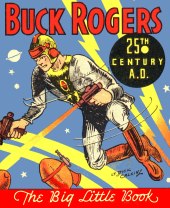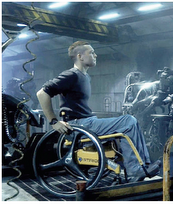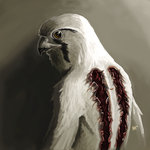“They’d never be cured. […] They were in a new world. It was the world we live in.” (China Miéville, Embassytown 312)
In the most basic sense, the irreparable is impossible to rectify or repair. It isn’t “fixable.” In law, the phrase “irreparable damage or injury” denotes a harm for which there is no compensation—no money or action will undo the harm. And yet, in The Coming Community (1993), Giorgio Agamben writes, “we can have hope only in what is without remedy” (my emphasis, 101).
This is a thoroughly shocking statement—one that runs counter to many of the basic assumptions that have informed western thought since at least the Enlightenment. It also intersects a range of important questions about speculative literature.
Agamben defines the irreparable as follows:
The Irreparable is that things are just as they are, in this or that mode, consigned without remedy to their way of being. States of things are irreparable, whatever they may be: sad or happy, atrocious or blessed. How you are, how the world is—this is the Irreparable. (90)
This is to generalize the irreparable, to use damage or injury as an epitome to grasp things “just as they are” or things that just can’t be changed. My youngest son was born with Spina Bifida and is paraplegic. As a father, the words I learn to speak are “there is no cure.” How I see the world breaks repeatedly on his condition. There is no cure for my life either. There is no remedy.
The stakes of the irreparable are difficult to articulate. Here, I recall Robin Blaser’s poem, “Even on Sunday”:
we can thereby return to ourselves a measure of freedom, and take form / the work of a lifetime—in this breaking of boundaries—
against,
as Mayer says, a global disposition of thought toward annihilation, which thinks to admit only majorities in the future and is determined to equate minorities with ‘worthless life’ Worthless are the Jews, there the blacks [and aboriginals], somewhere else (and everywhere) the homosexuals, women of the type of Judith and Delilah, not least the intellectuals keen on individuation . .
‘They should all be gassed’: the expression has crept into everyday language Woman is not equal to man. Man is manly man, whatever is to be understood by that: the feminine man stands out from the race and thereby becomes worthless life. Shylock must be exterminated: the only final solutions are fire and gas….
As a society, sometimes, we begin to learn the irreparable. We begin to accept homosexuality. We begin to open our lifestyles and practices to those with special needs. We begin to think about mental illness instead of pushing it out of sight. Our most insistent ethical positions reject extreme remedies—the Shoah, eugenics, residential schools. These instances widen the epitome, force the irreparable into the open, as it were.
Agamben’s sense of the irreparable—things “as they are…without remedy”—offers a litmus test for speculative literature.
On the one hand, the irreparable serves as a check on the often rampant embrace of the ideal of progress that characterizes science fiction. It isn’t that progress is a problem per se. If we can cure polio, then maybe polio isn’t irreparable. But what is in need of remedy? This isn’t an idle question in an era when psychiatry seems to label ever more disorders and proffer pharmacological treatments; when plastic surgery becomes Reality TV; when in utero sex identification corresponds with gender preference; when disease is “cured” by genetic screening and avoidance; when genetic engineering becomes practice. Even more difficult is the tricky line between imagined remedy and our actual condition, or when we imagine reparation for the irreparable.
 The sometimes extreme exuberance of science fiction can be seen in its early comic caricatures such as Buck Rogers or The Jetsons.
The sometimes extreme exuberance of science fiction can be seen in its early comic caricatures such as Buck Rogers or The Jetsons. From Jules Verne to Peter Hamilton, there is a certain optimism about technology and the prospect of science to master the environment and transcend the human condition.
From Jules Verne to Peter Hamilton, there is a certain optimism about technology and the prospect of science to master the environment and transcend the human condition.
Optimism in nineteenth-century scientific romance corresponds to the institutionalization of science and its social mandate in that century (see Robert Mitchell’s article on Percy Bysshe Shelley’s Queen Mab and the founding of the Royal Institution in London for an example).
Mid-twentieth century works by authors such as Robert Heinlein (see the collection of stories The Green Hills of Earth) often extend such optimism to near realistic depictions of technological triumph. From the Industrial Revolution to the Cold War, science fiction reflects the precipitous rate of change and more often articulates an ideology of possibility that corresponds with emerging global capitalism and rampant consumerism.
Toward the end of the twentieth-century, the vertigo of such imagination often flirts with religion as the genre increasingly promises soul-like technologies. Examples abound in Iain M. Banks where soul technologies allow the Chelgrian species to literally build a heaven in Look to Windward. In Richard Morgan’s Broken Angels or Peter Hamilton’s The Reality Dysfunction, the transcendence of the human  body seems almost complete (if the plots would settle down, that is). More tempered and contextualized by a critique of progress, James Cameron’s film Avatar (2009) imagines the paraplegic Jake Sully becoming his avatar, a remedy that is perhaps quite subtle but nevertheless a remedy that epitomizes the progressive possibilities of genre sf. (I fully applaud the inclusion of a paraplegic protagonist. I’d also like to become an avatar, which is why Agamben’s placement of “hope” in the irreparable is so difficult to accept.)
body seems almost complete (if the plots would settle down, that is). More tempered and contextualized by a critique of progress, James Cameron’s film Avatar (2009) imagines the paraplegic Jake Sully becoming his avatar, a remedy that is perhaps quite subtle but nevertheless a remedy that epitomizes the progressive possibilities of genre sf. (I fully applaud the inclusion of a paraplegic protagonist. I’d also like to become an avatar, which is why Agamben’s placement of “hope” in the irreparable is so difficult to accept.)![]()
On the other hand, the irreparable also provides a way to understand how science fiction acts on collective delusions and directly critiques ideas of progress.
Of course, there is a long tradition of critique in science fiction, and dystopias weigh heavier than utopias. We tend to remember Aldous Huxley’s Brave New World and George Orwell’s 1984, while we neglect the extreme advancements of humanity in some of Olaf Stapleton’s utopian novels, such as Star Maker (1937). At the turn of the century, it was Futurama in the place of The Jetsons. (We can’t seem to get rid of The Jetsons, but still.)
Mary Shelley’s Frankenstein doesn’t celebrate progress; it questions it by interrogating the psychological and social perspectives of Victor Frankenstein and Robert Walton. H. G. Wells’ The Time Machine measures human society and homo sapiens using evolutionary time scales. Kurt Vonnegut Jr.’s Player Piano (1952) articulates anxieties about machines making human labour irrelevant. In the novels of Phillip K. Dick, paranoia becomes the modus operandi.
On the whole, in general, we can consider the irreparable in science fiction in a way that almost makes common sense, whether we question its puppy-like exuberance for flying cars and communicators (I mean cell phones) or find ourselves “breaking boundaries” and apprehending the irreparable or its hope.
For fantasy, the irreparable vexes the tension between escapism and disclosure (of the unconscious). It offers a counterpoint to the commonplace assessment that fantasy is about escapism. Do we not think that fantasy is escapist at root? Even those who love fantasy and study it repeatedly inscribe the line beyond which the story becomes escapist. Before he recognized the possibility of “radical fantasy,” the Marxist critic Frederic Jameson argued, in “Magical Narratives: Romance as Genre” (1975), that the genre of fantasy is “archaic nostalgia.” Afterward, in “Radical Fantasy” (2002), he retained the line but offered some hope. Recently George R. R. Martin observed that it’s hard to imagine Hobbits having sex, echoing one of Carl Freedman’s lines of discontent, in “A Note on Marxism and Fantasy” (2002), that Middle-earth is “a thin and impoverished world” lacking sexual desire, class conflict, religious or political belief, and psychological complexity, “which is to say Middle-earth leaves out most of what makes us real human beings living in a real historical society” (263). Ouch.
I’ll question this claim at another time—it requires a detour into the work of Ien Ang and Janice Radway. For now, I’ll let it represent the escapist vector of fantasy; how fantasy obscures the irreparable by allowing us to become distracted. The reason Marxists hate this is obvious: it resembles the classic Marxist formulation of ideology as false consciousness.
 So, how can we possible take fantasy seriously when it comes to the irreparable? Let’s start with explicit examples of traumatic injury. In The Fellowship of the Ring, on Amon Sûl (also called Weathertop), the Witch-king of Angmar, one of five attacking Nazgûl, stabs Frodo with a Morgul blade. In Rivendell, Elrond tends to Frodo and prevents him from dying or perhaps, as Aragorn suspects, turning into a wraith, but the wound never fully heals. The recurring trauma of this wound is part of the reason for Frodo’s departure for Valinor after the War of the Ring. Obviously Frodo goes through a lot and the Morgul-blade scar is only one part of his inability to stay in the Shire and his need to leave Middle-earth, but it is emblematic of the irreparable harm he experiences. Frodo changes.
So, how can we possible take fantasy seriously when it comes to the irreparable? Let’s start with explicit examples of traumatic injury. In The Fellowship of the Ring, on Amon Sûl (also called Weathertop), the Witch-king of Angmar, one of five attacking Nazgûl, stabs Frodo with a Morgul blade. In Rivendell, Elrond tends to Frodo and prevents him from dying or perhaps, as Aragorn suspects, turning into a wraith, but the wound never fully heals. The recurring trauma of this wound is part of the reason for Frodo’s departure for Valinor after the War of the Ring. Obviously Frodo goes through a lot and the Morgul-blade scar is only one part of his inability to stay in the Shire and his need to leave Middle-earth, but it is emblematic of the irreparable harm he experiences. Frodo changes.
Less tangible, the trauma that inheres in the Stoor-Hobbit Sméagol in his metamorphosis into the creature we know as Gollum is a brutal instance of the irreparable. Peter Jackson’s rendering of Gollum helps explicate the problem of the irreparable, both the lack of a remedy and a type of hope that inheres therein. In one scene, Sméagol and Gollum engage in a classic split-personality argument that Sméagol seems to win: “Leave now and never come back!“ But, of course, Gollum comes back.
the creature we know as Gollum is a brutal instance of the irreparable. Peter Jackson’s rendering of Gollum helps explicate the problem of the irreparable, both the lack of a remedy and a type of hope that inheres therein. In one scene, Sméagol and Gollum engage in a classic split-personality argument that Sméagol seems to win: “Leave now and never come back!“ But, of course, Gollum comes back.
Early on, Gandalf and Frodo discuss Gollum in a manner that touches on some of what I`ve noted with regard to remedies and hope. Frodo wishes that Gollum had been killed, while Gandalf is more cautious.
‘But this is terrible!’ cried Frodo. ‘Far worse than the worst that I imagined from your hints and warnings. O Gandalf, best of friends, what am I to do? For now I am really afraid. What am I to do? What a pity that Bilbo did not stab that vile creature, when he had a chance!’
‘Pity? It was Pity that stayed his hand. Pity, and Mercy: not to strike without need. And he has been well rewarded, Frodo. Be sure that he took so little hurt from the evil, and escaped in the end, because he began his ownership of the Ring so. With Pity.’
‘I am sorry,’ said Frodo. ‘But I am frightened; and I do not feel any pity for Gollum.’
‘You have not seen him,’ Gandalf broke in.
‘No, and I don’t want to,’ said Frodo. ‘I can’t understand you. Do you mean to say that you, and the Elves, have let him live on after all those horrible deeds? Now at any rate he is as bad as an Orc, and just an enemy. He deserves death.’
‘Deserves it! I daresay he does. Many that live deserve death. And some that die deserve life. Can you give it to them? Then do not be too eager to deal out death in judgement. For even the very wise cannot see all ends. I have not much hope that Gollum can be cured before he dies, but there is a chance of it. And he is bound up with the fate of the Ring.` (LOTR, Kindle ed. 72-3)
Gollum is not cured. In the end (and sorry for the spoiler), he destroys the ring because of the very corruption it has exerted on him. Here, somewhat oddly, we encounter an example of hope in the irreparable on a grand, world-changing narrative scale.
But we`re still on the far side of that line, in the escapist end of fantasy. Not unexpected, we find the irreparable as an explicit theme in what Jameson calls radical fantasy.
 The plot of China Miéville’sPerdido Street Station is driven by the plight of the Garuda (a type of bird man) Yagharek, whose first-hand story frames and interleaves the main narrative. Yag has had his wings cut off as punishment for his crime, and the novel`s protagonist Isaac Dan der Grimnebulin goes to extraordinary lengths to allow him to fly again. You`d think that flying wouldn`t be so difficult in a fantasy world with a number of flying creatures (and other stuff), especially when the candidate was a bird-man. You`d almost be wrong. It’s damn hard. But later, when Isaac has the technical means of flight worked out, he`s persuaded that he shouldn`t do it. It is no slight distinction. Eugenics is technically possible, but should we engage in it? In conclusion, Yag declines an offer that would allow him to fly. Instead he accepts the city of New Crobuzon as his “home” and himself as a “man” (623). It is this acceptance of the irreparable that I think of when Agamben speaks of hope.
The plot of China Miéville’sPerdido Street Station is driven by the plight of the Garuda (a type of bird man) Yagharek, whose first-hand story frames and interleaves the main narrative. Yag has had his wings cut off as punishment for his crime, and the novel`s protagonist Isaac Dan der Grimnebulin goes to extraordinary lengths to allow him to fly again. You`d think that flying wouldn`t be so difficult in a fantasy world with a number of flying creatures (and other stuff), especially when the candidate was a bird-man. You`d almost be wrong. It’s damn hard. But later, when Isaac has the technical means of flight worked out, he`s persuaded that he shouldn`t do it. It is no slight distinction. Eugenics is technically possible, but should we engage in it? In conclusion, Yag declines an offer that would allow him to fly. Instead he accepts the city of New Crobuzon as his “home” and himself as a “man” (623). It is this acceptance of the irreparable that I think of when Agamben speaks of hope.
At the far end of the spectrum from fantasy-as-escapism lies fantasy-as-unconscious-expression. Regardless of what we may think of Freud, his theory of the unconscious provided a way to take dreams seriously—to treat them as akin to stories about the psyche and its troubled negotiation of libidinal desires and social norms. His theory of the uncanny pushes this into waking and reading experience, where repressed contents such as “infantile complexes…are once more revived by some impression, or when primitive beliefs which have been surmounted seem once more to be confirmed” (“The ‘Uncanny,’” Part 3).
One of the unsatisfactory aspects of Freud’s theory of the uncanny is that the fantastic is a type of hallucination or symptom of the unconscious that marks a deviation from the reality principle. In order to get beyond this sense of deviation—in order to appreciate the fundamental importance of the fantastic to whatever we take to be reality, we need to turn to Jacques Lacan.
In Lacan’s model of the psyche, we are separated from the Real when we enter into language, and this separation means that we are always in a condition of lack. In the most basic sense, fantasy compensates for lack by generating objects of desire that we think will fill our lack and reconnect us to the Real.
Lacan’s revision of Freud treats the unconscious as a language: “the unconscious is structured like a language” (“Seminar XX” 48). In his “Seminar on ‘The Purloined Letter,’” Lacan insists that “the unconscious is the Other’s discourse” (Ecrits 10).
The big Other designates radical alterity, an other-ness [that] cannot be assimilated through identification. Lacan equates this radical alterity with language and the law, and hence the big Other is inscribed in the order of the symbolic. Indeed, the big Other is the symbolic insofar as it is particularized for each subject. The Other is thus both another subject, in his radical alterity and unassimilable uniqueness, and also the symbolic order which mediates the relationship with that other subject. (Dylan Evans, An Introductory Dictionary of Lacanian Psychoanalysis 133)
This modification of the unconscious dramatically resituates the nature of dreams. Slavoj Žižek puts it this way:
for Lacan, the only point at which we approach [the] hard kernel of the Real is indeed the dream. When we awaken into reality after a dream, we usually say to ourselves ‘it was just a dream’, thereby blinding ourselves to the fact that in our everyday, wakening reality we are nothing but a consciousness of this dream. It was only in the dream that we approached the fantasy-framework which determines our activity, our mode of acting in reality itself. (The Sublime Object of Ideology 47)
So, it is in dreams that we apprehend how our fantasy structures our desire:
It is…fantasy itself which, so to speak, provides the co-ordinates of our desire–which constructs the frame enabling us to desire something. The usual definition of fantasy (‘an imagined scenario representing the realization of desire’) is therefore somewhat misleading, or at least ambiguous: in the fantasy-scene the desire is not fulfilled, ‘satisfied’, but constituted (given its objects, and so on)–through fantasy, we learn ‘how to desire’. (Žižek 118)
Elsewhere, Žižek describes these coordinates of desire as “the site of my truth” (How to Read Lacan 3). For Lacan, he tells us, the unconscious is “the site where a traumatic truth speaks out…an unbearable truth that I have to learn to live with” (3).
© Daniel Burgoyne 2012
